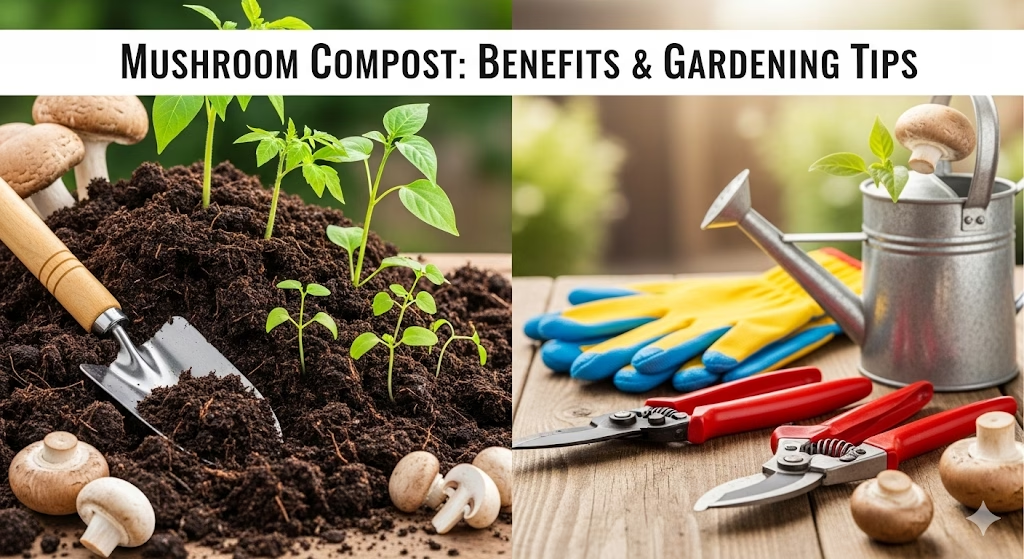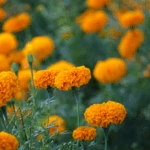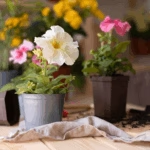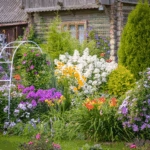Introduction
Soil health determines how well your garden grows. Among natural amendments, mushroom compost—often referred to as spent mushroom compost (SMC)—is gaining popularity. But is mushroom compost good for gardens, and how does it differ from spent mushroom compost? Let’s break it down.

What Is Mushroom Compost?
Mushroom compost is the organic mixture used in commercial mushroom production. It usually contains:
- Straw or hay
- Chicken or horse manure
- Gypsum
- Peat moss or corn cobs
Once mushrooms are harvested, the leftover material—called spent mushroom compost—is sterilized and repurposed for gardening.
Is Mushroom Compost Good for Gardens?
Yes, when used correctly, mushroom compost can benefit most gardens.
Benefits
- Improves soil structure – Lightens clay soils and helps sandy soils hold moisture.
- Adds organic matter – Supports beneficial microbes.
- Boosts water retention – Helps plants withstand drought.
- Provides nutrients – Contains nitrogen, phosphorus, potassium, and calcium.
- Balances soil pH – Slightly alkaline, which neutralizes acidic soils.
A University of California study showed mushroom compost improved soil water-holding capacity by nearly 50%.
Potential Drawbacks
- High salts – May harm seedlings and salt-sensitive plants.
- Alkaline effect – Not suitable for blueberries, azaleas, or rhododendrons.
- Lower nutrients – Already “spent,” so nutrient levels are milder than fresh composts.
Tip: Mix mushroom compost with homemade compost or manure for best results.
Mushroom Compost vs. Spent Mushroom Compost
| Feature | Mushroom Compost (Fresh) | Spent Mushroom Compost (SMC) |
|---|---|---|
| Definition | Organic substrate before mushroom farming | Leftover compost after mushroom harvest |
| Nutrient Content | Higher (rich in nitrogen and organic matter) | Lower but stable and gentle |
| Plant Safety | May be too strong for young plants | Safe, won’t burn roots |
| Cost & Availability | Less common for gardeners | Widely available, affordable |
| Best Use | Large-scale farming, soil building | Home gardens, soil improvement, mulching |
How to Use Mushroom Compost in the Garden
- Soil Amendment – Mix 1–2 inches into the topsoil to improve structure.
- Mulching – Spread a light layer around plants to retain moisture.
- Lawn Care – Apply as a thin top-dressing for greener lawns.
- Container Gardening – Blend with potting soil at a 1:3 ratio.
Best Plants for Mushroom Compost
- Tomatoes
- Peppers
- Leafy greens (lettuce, spinach)
- Root crops (carrots, beets, potatoes)
- Roses
Plants to Avoid
- Blueberries
- Rhododendrons
- Azaleas
- Camellias
Mushroom Compost vs Other Compost Types
| Compost Type | Benefits | Considerations |
|---|---|---|
| Mushroom Compost | Improves soil, retains moisture, adds calcium | Alkaline, can be salty |
| Manure Compost | High nutrient boost | Must be aged, risk of burning |
| Leaf Mold | Improves soil texture | Low in nutrients |
| Homemade Compost | Balanced and versatile | Takes time to produce |
Best Practices
- Use in moderation to avoid salt buildup.
- Mix with other composts for balanced nutrition.
- Always check soil pH if growing acid-loving plants.
- Don’t apply in thick piles; keep layers light.
Where to Buy Mushroom Compost
- Garden centers – Bagged, sterilized compost.
- Local mushroom farms – Bulk SMC at lower cost.
- Online retailers – Convenient delivery.
For more soil advice, see Best Soil Mixes for Container Gardening.
Conclusion
So, is mushroom compost good for gardens? Yes—it enriches soil, improves water retention, and promotes plant health. However, it’s best avoided for acid-loving plants and should be applied in moderation.
By blending spent mushroom compost with other organic matter, you’ll build healthier soil and enjoy better harvests.
Call to Action: Explore more organic gardening guides and eco-friendly soil tips at Agzora.com.





